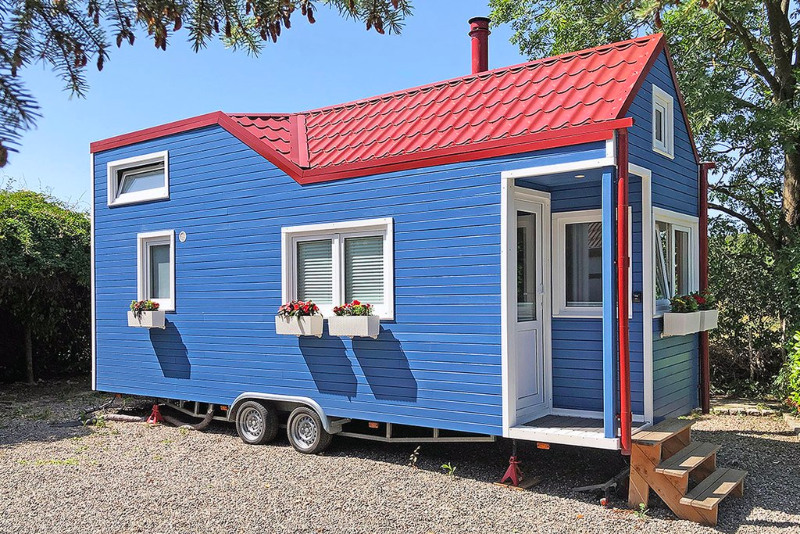
Once again we are trying to bail out the sinking boat with a golden thimble.
An article in The Seattle Times, “More Seattleites are housing homeless people in their backyards, but it’s hard to find the right fit,” demonstrates the central problem of scale: nice ideas that operate at such a small scale as to be largely irrelevant.
The BLOCK Project, described in the Times article, looks for homeowners in Seattle who will host a small backyard housing unit that will be occupied by a currently homeless individual. According to the Times, after two years, nine families have installed the units, and five of those units remain empty, as the owners look for just the right tenant fit.
This is the sort of effort that launches with great headlines and is featured on morning TV programs. It feels good and shows the privileged helping the less privileged in an up-close and personal way. But it has failed to scale in any meaningful way.
The 2019 Point in Time count of homeless in King County found 11,199 individuals, about half of whom were unsheltered. The BLOCK Project has helped four people in two years and has five vacancies. It aims to install six to twelve one-person units in 2020. This high profile project has as its goal to help, at most, one tenth of one percent of the homeless population. Like other permanent housing programs, it operates two or three orders of magnitude below the scale of the problem.
The most obvious difficulty is cost. The 125 square foot units that the BLOCK project builds and installs cost upwards of $100,000 (which may be reduced through donated materials and labor). That comes out to $800 per square foot, which is at the very upper end of luxury housing. Typical single family detached housing costs somewhere between $100 and $200 per square foot, including site work and utilities. Manufactured housing and simple travel trailers come in under $100 per square foot.
A big driver of the costs of the BLOCK units is scope creep—loading non-essential objectives onto the budget. The BLOCK project does not just want to help the homeless, it wants to demonstrate all manner of good practices that resonate with progressives. The homes are “off the grid,” which means they have solar power, rainwater capture and filtering and composting toilets. These are interesting but very expensive features to put into a small structure, and it is not clear how including them in the project helps the homeless. This kind of intersectionality can gain allies but pushes costs way up.
The idea of using backyards for low cost housing is a good one and should be pursued. With a few modifications The BLOCK project could help a lot more homeless people.
First, drill in on a single objective: inexpensive housing. Get rid of all the non-essentials and focus on creating units that are simple, safe and comfortable. Hook into the main house utilities. Use inexpensive materials and construction techniques and work hard to find the most cost-effective ways to create a structure that will fit into the neighborhood.
Second, put construction out to bid with manufactured home firms in the Northwest. Perhaps use a design-build approach that lets the experts create a home that meets requirements at the lowest cost. Make a variety of exterior finishes available to fit with the surroundings. Have the homes built in batches rather than one at a time. If manufactured home companies can produce 500 square foot park model homes for $50,000, they can produce 125 square foot backyard homes for far less than $100K.
Third, consider using off-the-lot travel trailers. A brand new 17-foot unit can be parked in a driveway and provide an instant 200 square foot home for between $15,000 and $20,000. These units cannot take much of a beating, so the owner would need to find a tenant who would be light on the furnishings. If people can rent out RVs through Airbnb, generous folks should be able to provide them to the homeless.
Finally, aim at the least challenging segment of the homeless population, to minimize household and neighborhood anxiety. There are many people who have had stable lives and just recently tipped into homelessness due to some misfortune. These people need stability to get back on their feet, and a friendly backyard home with a supportive family nearby can keep them from slipping further away from self-sufficiency. Many could pay a bit of rent so they feel less like a “client.”
In other words, target individuals with acute problems that can be remedied with a safe home, and not people with chronic problems that are difficult to manage in someone’s backyard. This is a strategy to prevent long-term homelessness, which is as important as curing it.
Backyard housing for the homeless can get to a higher scale if we keep it simple, keep it inexpensive and leave complex case management to the professionals. Let’s have more homes and fewer composting toilets. More tin buckets and fewer golden thimbles.

This makes a lot of sense, but I wonder about the value of housing homeless folks in neighborhood settings, given the anxieties about theft. It seems like another illustration of Seattle’s desire to pass idealistic legislation and than make sure it is almost impossible to implement, lest a backlash ensue.
The other problem is agreeing on pre-fab housing units, which greatly reduce costs. All kinds of other agendas get mobilized (energy, materials, utilities), and we simply don’t have a strong agency to cut through all the turf wars. We keep blaming capitalism and single family homes and racism for the affordable housing shortage, when the main problem (the government) rarely gets tagged with the blame.